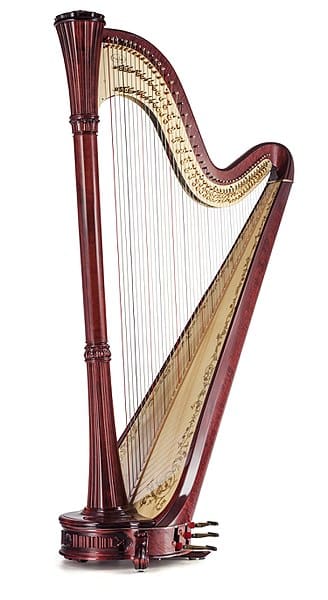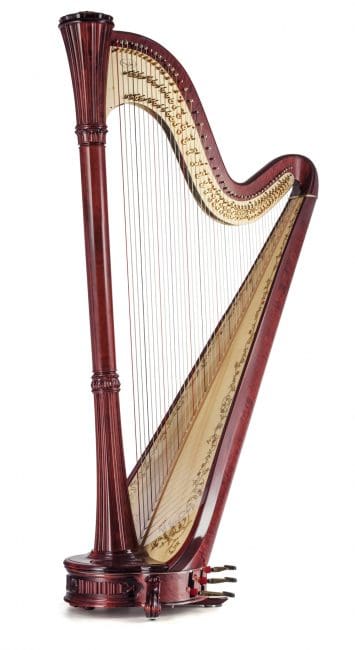At the start of the year, I began working in earnest on the flute and harp piece I wrote for Luke Blackburn’s EcoMusic concert. Due to the COVID-19 pandemic is no longer happening this week, but that postponement does allow for a special opportunity! See below for more details.
During the idea-gathering phase, besides reading all about butterflies and toying with some musical metaphors about them, I also perused the flute and harp literature for ideas.
After surveying a bunch of harp music, something just clicked. I realized something I hadn’t noticed before about writing for harp: Unlike in piano writing, harp parts rarely feature fleshed out inner voices.
In fact, of the two dozen or so pieces I looked at today, I saw barely any inner voice writing that went beyond voice leading between chords. Take Britten’s Suite for Harp. Or Saariaho’s Tocar. Or Pierné’s Impromptu-Caprice. Or Tüür’s Prints. Stylistically, these pieces are all over the map. But they all lack any substantive inner-voice writing. Colin Matthew’s Little Suite has maybe a dozen bars of an independent middle voice, but also mostly aligns with this trend.

Looking now over nkoda’s “Essential Harp” collection of scores:
- The Scarlatti sonatas have some — but mostly not
- Ditto the Handel B-flat concerto
- Glinka’s Mozart Variations are entirely devoid of it
- Ginastera’s Harp Concerto has some mildly independent inner voice writing — but only in the second movement
- Jolivet’s Prelude again only has some mildly independent writing
. . . and so it goes. Now, I’m sure there are plenty of harp players out there who can point me to their secret stash of pieces with rich inner voices. But from what I can tell, such writing is just not idiomatic for the harp.
What seems to be most common is textures of 1 or 2 layers. In fact, some of the most common textures seem to be (1) 2 notes in one hand and one note in the other, (2) one note per hand, or even (3) one note at a time.
These textures may be embellished (unsurprisingly) with all manner of arpeggiation, figuration, and doubling/planing. They may sometimes even feature block chords with smooth voice leading — but this still counts as doing one thing.
So I wrote my flute and harp piece accordingly. Here’s a draft of the first movement:
Learn more about the piece here.
Don’t Miss Next Week’s Post
Sign up to stay in the loop about my music—and ideas for your own composing!



I had a similar experience years ago writing a large-scale harp piece without more than a rudimentary grounding in harp technique. I spent an evening with the soloist and just watched her play, asked a few questions. This was very valuable, especially observing techniques she excelled at (she played fantastic two-handed trills) that I could incorporate in the piece. A further limitation was that it was for lever harp, so changing string settings has to be carefully planned and limited, even more than a pedal harp. You can hear my piece at the bottom of this page: http://www.markmitchell-music.com/instrumental-concert/